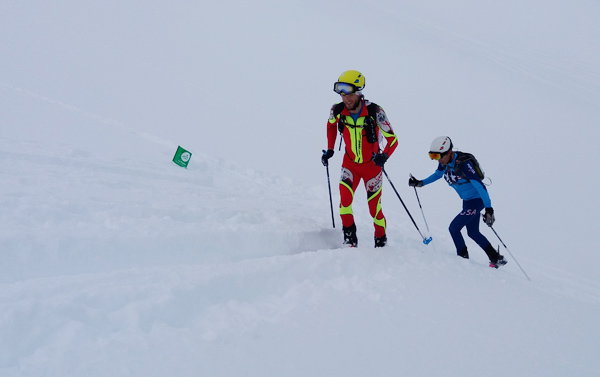How can two training plans be the same overall volume but be designed for two completely different athletes? How can we quantify training in a sport where the track is always changing?

You may recognize a few (or all) of the below terms from various training resources. They all refer to the same concept, that of training load or how much work was done during a training session:
- Intensity Factor
- TRainingIMPulse (TRIMP)
- Recovery Time
- Suffer Score
- Training Effect
In skimo, we can measure training time, distance of an activity, or vertical ascent. We can also measure training intensity by looking at pace, heart rate, and other measures. Individually, these measures are not particularly useful in telling us the value of our training but combined as training load, we get great insights about what benefits we will see.
Knowing only the distance completed per week is interesting but it doesn’t tell the whole story. If all you know about two athletes is that they each run approximately 40 miles per week, you might assume that they were similar fitness or had similar goals. In reality, a sprinter might run 40 miles per week but primarily on a track at a high intensity while a novice training for their first marathon might run the same amount over a much longer period of time at a very low intensity.
By combining volume (in this case distance) and intensity (in this case pace) we get an idea of training load – how much work is being completed as well as the physiological demands being placed on the athletes and the anticipated effects.
Measuring and Calculating Training Load in Ski Mountaineering
In ski mountaineering racing, pace can be a difficult factor to work with. The variable nature of the snow surface means that pace and intensity are not very well correlated (compared to a sport like road running where pace is highly correlated with intensity):
Deep, fresh snow means an athlete may be working at a high intensity but traveling very slowly and covering little distance. A well groomed low angle piste allows for very quick but fairly easy travel. Also, distance is relative, especially if descents are included in the calculation! For this reason, heart rate becomes the best measure of training intensity that can be easily quantified for skimo.

To measure training volume in skimo, distance is not useful for the reason described above. Vertical ascent is much more appropriate but still significantly influenced by changing snow conditions. Time is the best volume variable to work with.
The rise of modern GPS and heart rate enabled training watches have enabled us to collect a big amount of data on every session as most watches and their accompanying analysis software allow athletes to define their heart rate training zones. Then workouts can be broken down by intensity level: 30 minutes spent in Zone 1, 25 minutes in Zone 2, 18 minutes in Zone 3, or similar.
Each of the training load terms at the beginning of the article take the time spent in a Zone and assign it an intensity value, and then add up the time in each Zone to get a total training load number. The simplest way is to give Zone 1 a value of 1, Zone 2 a value of 2, and so on. From our example before the calculation would be as follows:
- 30 min of Zone 1 = 30
- 25 min of Zone 2 = 50
- 18 min of Zone 3 = 54
The total training load value for the workout is then = 134. For a simple comparison, a two hour workout entirely in Zone 1 would have a training load value of 120, thus, considered physiologically less taxing.
Most estimates of training load use more complicated intensity values that give each successive zone a smaller value so the low intensity zones are not undervalued, but that’s a topic for another post.
Training Plan Progression: Training Volume vs Training Load
Just like the training load of a workout can be calculated, the training load of a week, month, or entire training year can be determined. When developing a training program, it is important to look beyond just the total volume.
Is there a very little intensity (Zone 3-4) training or do you see a lot?
Who is this program designed for?
A novice training program may include a small amount of high intensity training. As the program increases in difficulty and a base volume is reached, volume might remain constant while total high intensity training time increases. In this case, overall volume (measured in time) stays the same but the training load increases, and new fitness levels are achieved!


Stano Faban says
Hi Neil, thanks for catching the typo! I just fixed it.
Neil Newton Taylor says
“a two hour workout entirely in Zone 1 would have a training load value of 90” ? not 120?